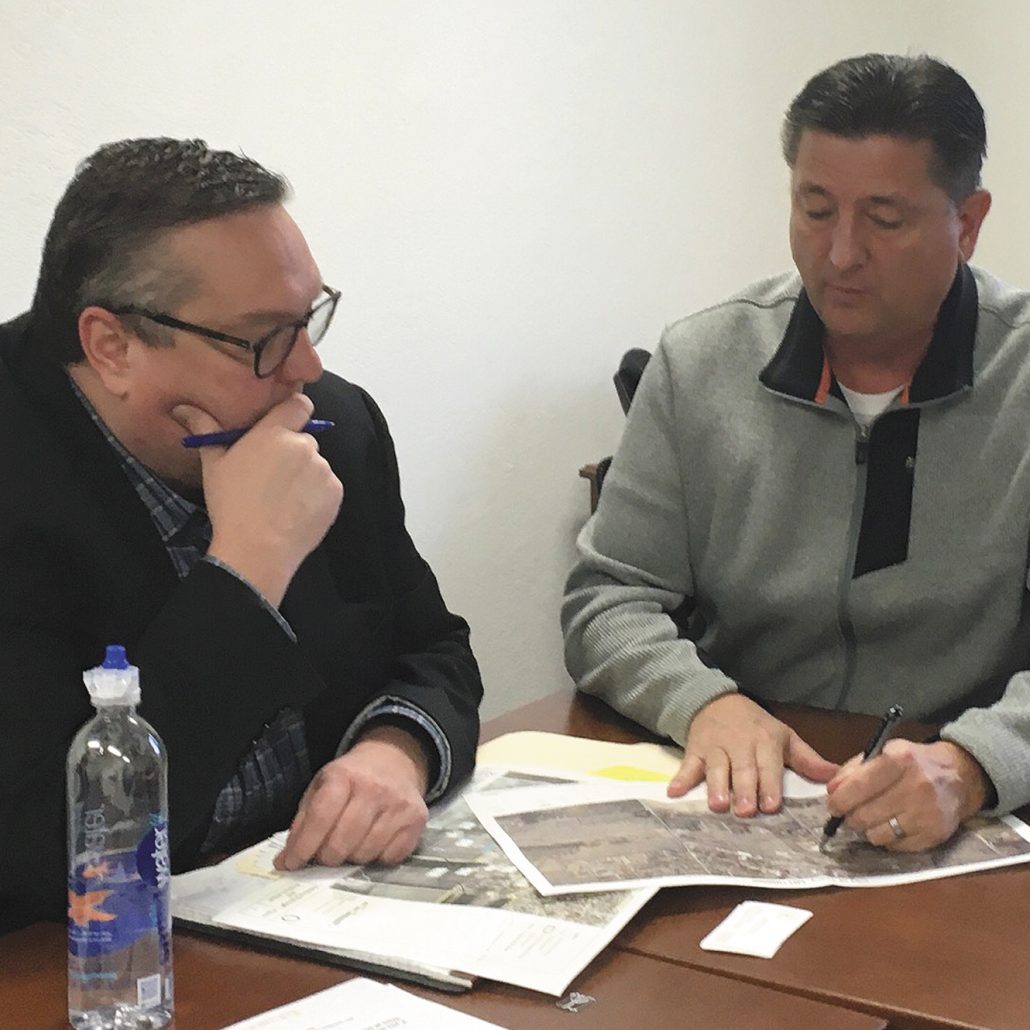
EDA members visit with federal director to discuss potential for flood relief funding for Tracy
Tracy EDA Director Jeff Carpenter and EDA Chair Dennis Fultz took some time last week to relive a nightmare.
The pair was in Slayton for a somewhat impromptu visit by Darrin Fleener, a national Economic Development representative out of Chicago whose business is finding projects to award EDA grants to. In giving Fleener a small sampling of the horrors from the 2017 flood, Carpenter was blunt.
“We had two feet of water running down Highway 14, into businesses,” he said. “We had water running into the grocery store, into Midwest Supply — into everything.”
Last week’s meeting was the beginning of what will likely turn out to be a months-long discussion that, local officials hope, will lead to some federal financial assistance to help keep Tracy dry in the future.
Tracy has been in contact with FEMA ever since the flood to successfully garner relief in areas the EDA might not be able to help with.
Fleener said there are two types of disaster declaration: public and individual assistance; the EDA would be the group to help with the former.
“Individual assistance declarations, while we don’t provide any of that assistance, will make that area eligible for public assistance,” he said.
Fleener added that the EDA’s role is to facilitate the recovery process. That, he said, can mean two things, including recovery in the context of lessening the economic impact from a disaster event. That can take the form of direct infrastructure — walls and pumping systems, for example.
“The other way that we can lessen the economic impact from a disaster is to provide resiliency and diversification into your economy,” said Fleener. “Just by the very nature of diversifying your economy, the economic impact from the next event will be lessened. It takes more discussion; we have to work on that a little more.”
There was originally $50 million in EDA grants available, but $12 million of that has already been dedicated to various disaster areas around the country. Fleener said the organization has 24 months to spend the money.
Fleener said he’s looking for projects and wants to help cities like Tracy recover from events like floods. He was provided maps by Fultz that showed the city and surrounding farmland. The map was used to illustrate how water flows from the southwest near the high school, to the northeast during very heavy rains.
“Everything’s pointing to town,” Fleener said. “That’s not good.”
“There’s probably a 100 feet of elevation difference between the high point and to where some of our problems are,” Fultz said. “The water gets away from the town very fast, but first it has to flow through the community. We can solve the problem very easily, it’s just a matter of getting everyone on the same page.”
Fleener called the hydrological situation at certain points in Tracy “kind of scary.”
Carpenter told Fleener that the city of Tracy has been proactive when it comes to infrastructure, noting the cost of the three phases of construction will total more than $30 million.
“We just want to get things to where we can thrive, that’s what we’re looking for,” Carpenter said. “We’ve done wonderful things to try to sustain the community that we have.”
Fleener said from his past experiences, he’s confident Tracy can control the water better than it has been able to.
“There’s a solution for it,” he said. “I’m kind of excited about it, it sounds like an interesting project. You can solve this problem.”
See this week’s Headlight Herald for more on this article.
